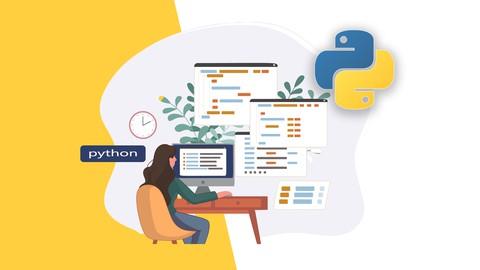Last Updated on October 10, 2023 by GeeksGod
Course : File Processing with Python
Python is a widely used, general-purpose, high-level programming language. Its design philosophy emphasizes code readability, and its syntax allows programmers to express concepts in fewer lines of code than would be possible in languages such as C++ or Java. The language provides constructs intended to enable clear programs on both a small and large scale.
Free Udemy Coupon for Learning File Processing in Python
If you are looking to enhance your Python skills and learn how to work with various file formats, then this course is a perfect fit for you. This comprehensive course will teach you step-by-step how to read popular file formats with Python, including comma separated value (csv) files, excel files (xls, xlsx), and json data.
Why Should You Learn File Processing in Python?
File processing is a fundamental skill for any Python programmer. Working with files is essential for tasks such as data analysis, data manipulation, and data visualization. Whether you are processing data for business purposes, building web applications, or conducting scientific research, knowing how to read and write files in Python is crucial.
Python provides a range of powerful libraries for file processing, making it a versatile language for handling different file formats. By mastering file processing in Python, you will have the ability to work with diverse data sources and perform complex operations on them.
What Will You Learn in This Course?
This course is designed to take your Python skills to the next level by teaching you how to effectively work with various file formats. It covers the following topics:
- Reading and writing CSV files using the Python standard library and the Pandas module.
- Manipulating Excel files, including reading, writing, and performing data analysis using the openpyxl library.
- Parsing JSON data and extracting information using the built-in JSON module.
- Handling different file formats by understanding their structures and applying appropriate processing techniques.
- Implementing best practices for file processing to ensure efficient and reliable code.
This course adopts a hands-on approach, providing you with plenty of coding examples and exercises to practice what you learn. By the end of the course, you will have gained the confidence to tackle real-world file processing tasks using Python.
Who Should Take This Course?
This course is suitable for beginners who have just learned the basics of Python or object-oriented programming (OOP). If you have a basic understanding of Python syntax and concepts, you will be able to follow along with the course material.
Professionals working in fields such as data analysis, web development, and scientific research will particularly benefit from this course. However, anyone interested in learning how to process files in Python can enroll and gain valuable skills.
Enroll Today and Unlock Free Udemy Coupon!
Don’t miss out on the opportunity to enhance your Python skills with this comprehensive course on file processing. By enrolling today, you will gain access to a free Udemy coupon that allows you to enroll in the course at no cost.
Remember, file processing is a crucial skill for any Python programmer, and this course will equip you with the knowledge and techniques to handle different file formats effectively. Enroll now and take your Python skills to the next level!
Free Udemy Coupon, file processing python. Free Udemy Coupon, file processing python. Free Udemy Coupon, file processing python. Free Udemy Coupon, file processing python. Free Udemy Coupon, file processing python.














